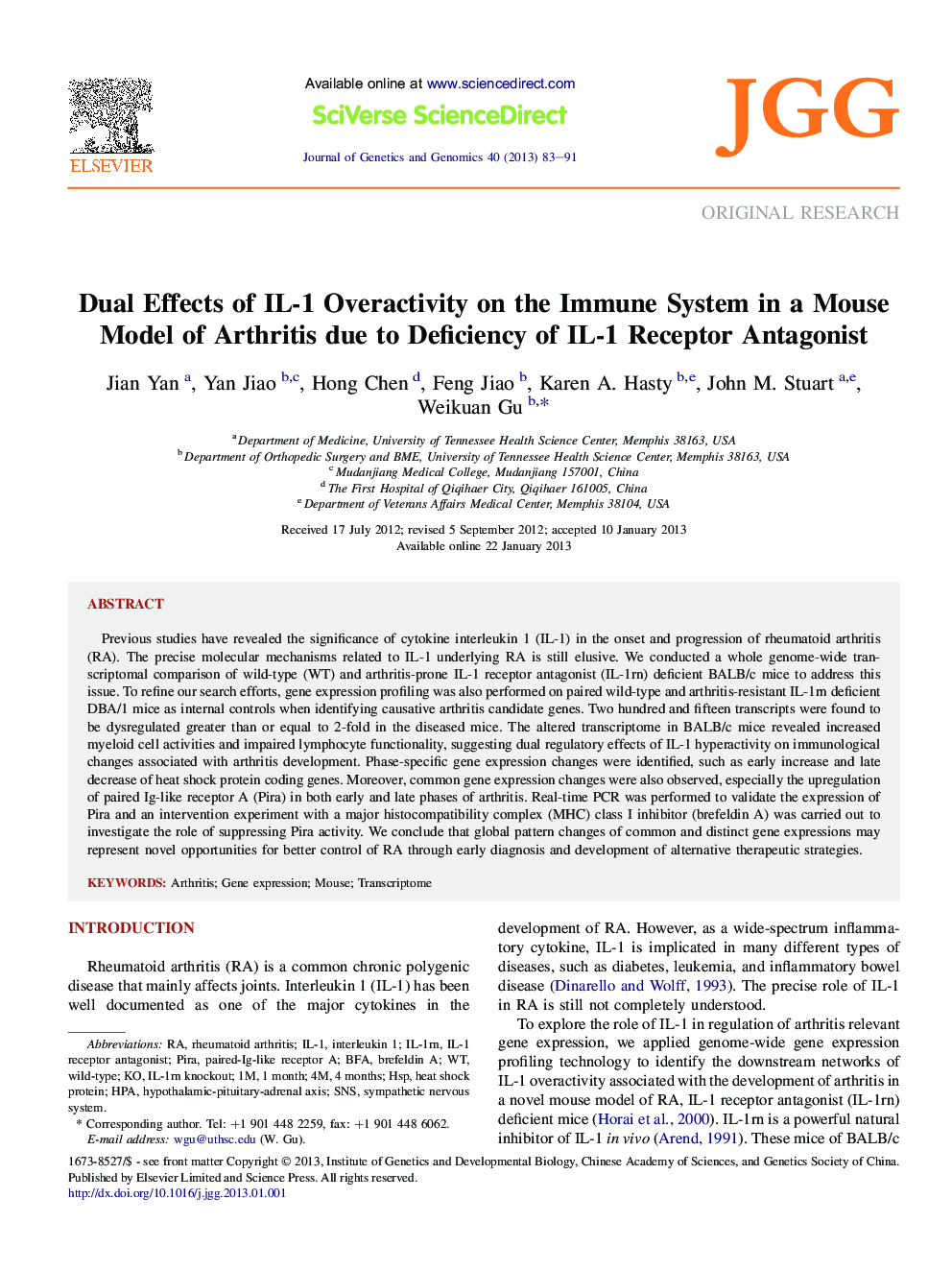| Article ID | Journal | Published Year | Pages | File Type |
|---|---|---|---|---|
| 2787610 | Journal of Genetics and Genomics | 2013 | 9 Pages |
Previous studies have revealed the significance of cytokine interleukin 1 (IL-1) in the onset and progression of rheumatoid arthritis (RA). The precise molecular mechanisms related to IL-1 underlying RA is still elusive. We conducted a whole genome-wide transcriptomal comparison of wild-type (WT) and arthritis-prone IL-1 receptor antagonist (IL-1rn) deficient BALB/c mice to address this issue. To refine our search efforts, gene expression profiling was also performed on paired wild-type and arthritis-resistant IL-1rn deficient DBA/1 mice as internal controls when identifying causative arthritis candidate genes. Two hundred and fifteen transcripts were found to be dysregulated greater than or equal to 2-fold in the diseased mice. The altered transcriptome in BALB/c mice revealed increased myeloid cell activities and impaired lymphocyte functionality, suggesting dual regulatory effects of IL-1 hyperactivity on immunological changes associated with arthritis development. Phase-specific gene expression changes were identified, such as early increase and late decrease of heat shock protein coding genes. Moreover, common gene expression changes were also observed, especially the upregulation of paired Ig-like receptor A (Pira) in both early and late phases of arthritis. Real-time PCR was performed to validate the expression of Pira and an intervention experiment with a major histocompatibility complex (MHC) class I inhibitor (brefeldin A) was carried out to investigate the role of suppressing Pira activity. We conclude that global pattern changes of common and distinct gene expressions may represent novel opportunities for better control of RA through early diagnosis and development of alternative therapeutic strategies.
